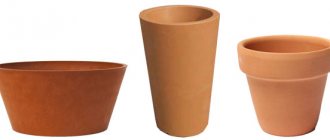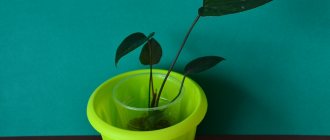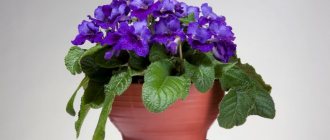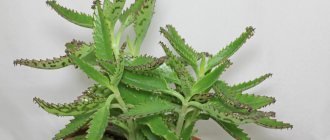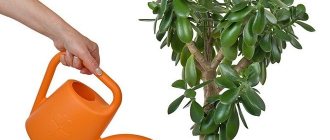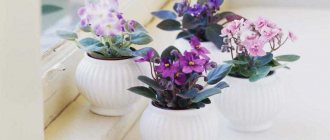As a rule, every time you are going to plant beautiful indoor plants in new pots, you first prepare the drainage, and only then work on the soil mixture. And despite the fact that you do all the work very carefully, after some time the flower begins to wither and die, and you cannot understand why this happened. A familiar situation, isn't it?
I always added drainage to each flower pot, but recently I stopped doing this, since it is the layer of gravel placed at the bottom of the pot that causes most indoor plants to wilt. It turns out you shouldn't add gravel or other rough materials to your planters. The belief that without drainage there will be excess moisture and the plant will begin to rot is nothing more than a myth.
Operating principle of drainage
Drainage for flowers - what is it? Air absorption is very necessary, even more so than a regular watering regimen. Drainage for indoor plants must be capable of air exchange. This makes it possible for the roots and the entire plant to consume the necessary amount of air.
Large expanded clay for flowers (photo)
It acts as a whole system, provides air flow and is water permeable. It is very important to use drainage; it can be made from different materials in the form of large grains or fractions that do not enter into chemical reactions when moistened, will not collapse when interacting with moisture and will not rot.
Materials for production
Typically, drainage is made from natural or similar materials:
- Pebbles;
- Crushed stone;
- Brick.
In a flower shop you can purchase specially designed drainage made from the following materials:
- Expanded clay;
- Vermiculite;
- Agroperlite.
Purchased drainage for a flower pot
They allow liquid to pass through well, protect flowers, and cleanse the soil of various harmful salts and toxins.
To choose the right material, you need to take into account your imagination. For many vegetation, the container is filled to less than half, such plants include:
- Saintpaulia;
- Streptocarpus;
- Anthurium.
Drainage for indoor flowers should be laid at a height of 3 cm. The listed types can be replaced with foam plastic. It will qualitatively protect the soil from hypothermia.
Expert opinion
Yulia Yurievna
I have a large garden and vegetable garden, several greenhouses. I love modern methods of cultivating plants and mulching the soil, and I share my experience.
Ask a Question
Not only pebbles and similar materials can be used as drainage for indoor plants, as well as for cultivating seedlings. Sometimes old sawdust, shells collected from a river or sea, buckwheat or rice husks are used. Occasionally place tea bags on the bottom. We would like to note that it is important not only to lay a sufficient layer of drainage in the flower pot, it is also worth taking care of the soil being light and breathable, and the required number of holes for moisture drainage in the bottom of the container. If the pot is large enough, it is better to have 2-3 such holes. One is not always enough. Moisture can collect under the edges, allowing infection to develop.
Proper drainage of house plants
The health and even life of the green pet ultimately depends on how correctly the gardener organizes the drainage system. It is important to pay attention both to the planting container itself and to the height and composition of the drainage layer. Let's look at these nuances in more detail.
Drainage layer height
The height of the layer, the main purpose of which is proper drainage, depends on both the plant and the dishes chosen for planting.
As you know, bowls for plants can be of very different shapes, from narrow and tall to wide and low. The height of the drainage directly depends on the shape of the container. So, in tall narrow pots, the soil dries out slowly; therefore, in containers of this type, the drainage layer should be quite voluminous (4-6 cm). Low and wide bowls, on the contrary, require a large surface area of the soil through which air exchange occurs. Therefore, the drainage in this case may be slightly less (1.5-2 cm). In standard bowls, the height and diameter of the upper ring of which are the same, the usual size of the drainage layer is about 3 cm.
The above dimensions apply only to medium-sized containers, so allowance should be made for the capacity of the planting container. In general, the height of the drainage layer in tall and narrow pots should be 1/3 or 1/4 of the total volume, in low and wide ones - 1/8, and in standard ones - 1/5 or 1/6.
The height of the drainage layer depending on the size of the pot
The material from which the flowerware is made is also important. It is known that unfired clay has a porous structure that allows air to pass through. In such pots, the plant's roots will receive a sufficient amount of oxygen, so the drainage layer may be slightly lower. Plastic, metal, glass, glazed ceramics are airtight, which should be taken into account and compensated for by a significant drainage height.
Another factor that you need to pay attention to is the number and diameter of the drainage holes in the flower container. The more there are and the larger the diameter they have, the lower the drainage layer should be. The size of the fractions of the drainage layer should also be taken into account - they should not spill through the holes.
The best option would be a two-layer drainage device: the bottom layer is coarse-grained, the top is fine-grained. Such a system perfectly passes excess liquid without clogging the drainage holes and without spilling out.
The volume of the drainage layer also depends on the indoor plant being planted. The homeland of some of them is the rainy tropics, others are dry deserts, and there are those who came to our homes from wet swampy places. That is why, before planting, it is important to find out in what natural conditions this or that representative of the kingdom of Flora grows.
As a rule, residents of deserts and other regions with hot and dry climates (cacti and succulents, some types of palm trees) need good drainage. A low drainage layer is suitable for plants in marshy areas and epiphytes if a special breathable soil consisting mainly of bark is used.
Expanded clay drainage
Drainage made of expanded clay material for flowers grown at home - popular among hobbyists. It easily absorbs excess liquid; after the soil dries, it can release excess moisture, quickly leaves the container, and flows down round pebbles.
Expanded clay is very light and does not weigh down the flowerpot and will serve as drainage for 5 years. During transplantation, it is changed.
Expanded clay is used to mulch the soil surface; it will prevent the soil from drying out and covering with crust. Expanded clay can ensure the flow of liquid to the roots and prevent the formation of mold.
How to replace drainage for flowers
If none of the above types of drainage are at hand when planting or replanting a plant, you can use some of the materials at hand. The main thing is that they do not harm the plant, do not damage its roots and are not susceptible to mold or rotting.
Small fractions of crushed stone and gravel can serve as good drainage. The disadvantage will be the exceptional heaviness of a flowerpot with such drainage. It is suitable for small pots or large flowerpots with rarely replanted plants that do not move from place to place.
An alternative option could be a small aquarium stone, which is suitable not only as a drainage material, but also as a decoration for the surface of the ground. But its cost is usually very high.
Often, boxes of polystyrene packaging from equipment or household appliances gather dust in attics or closets. It turns out that this material is also suitable as drainage for flowers. It is lightweight, does not absorb water, does not deform or decompose, is non-toxic, and has no odor. Well used for heavy ceramic flowerpots. Excess moisture flows down it into the pan. For the drainage layer, this material is cut into cubes and laid out on the bottom in a two-centimeter layer. The disadvantage of polystyrene foam is that over time, plant roots entwine it and when replanting there is a danger of damaging the root system of the flowers.
Another option would be broken clay bricks. During production, various additives that improve the quality are mixed into the clay and fired. Therefore, the result is a durable natural material that absorbs excess liquid well. The main disadvantage is that broken bricks have sharp edges that can damage the roots. It is advisable to sharpen the pieces of brick before placing them in flowerpots. It is also preferable to use pieces of white sand-lime brick, since it has more pronounced drainage properties than red ceramic brick.
How to properly place it on the bottom of the pot
A small layer of drainage can lead to oxygen starvation and root rot. Taking into account what material will be used determines the effectiveness of the layer. You also need to consider the size and shape of the flower container for planting flowers.
Drainage pebbles in a flower pot
For any flowers grown at home, it is recommended to purchase flowerpots with drainage holes, but for different types of soil and for each plant, this is all individual. For example, for cacti, the fast drainage method will be optimal. A porous soil mixture is poured into a small planting container with a large number of holes.
If there are no holes in the pots, drainage will reduce its effectiveness. Excess moisture escapes through the holes and air enters the root system. The layer should always be at the bottom of the container; it is extremely important for house plants, along with lighting, watering and fertilizing.
Other elements of the drainage system
In addition to the layer of bulk materials, the drainage system should also include:
- drainage holes of the container itself;
- loosening additives to the substrate, which give it a light, loose texture, prevent the soil from becoming excessively compacted.
They function in the same system and are equally important to ensure optimal conditions. When growing hydroponically, drainage completely replaces the growing substrate; in fact, the entire technology is drainage.
But even in hydroponics, the drainage holes of the container do not lose their importance, because even with an ideal drainage layer, insufficient outflow of water from the container itself will negate all efforts.
Pots and various flowerpots, no matter how attractive and stylish they are, must have at least one drainage hole. But usually the optimal size and number of holes are selected for each plant and each container individually
In plastic or polymer pots it is easy to make holes yourself, but when purchasing ceramic and terracotta pots you need to evaluate the drainage capabilities of the pots more carefully. Any container for indoor plants requires drainage holes that will allow water to drain freely, will not become clogged with soil and roots, but will also prevent the substrate and drainage fragments from falling out of the pot.
The minimum dimensions for holes for water drainage are from 0.5 cm. Holes larger than 1 cm must be covered with a mesh. But choosing the quantity is more difficult: for tall containers you need 5 evenly distributed holes, which will allow the soil to dry out evenly in the lower part, and for wide and low pots one large hole is enough. For orchids and other epiphytes, “leaky” pots are chosen, with numerous holes in the bottom and walls.
Moderate drainage
For plants that require frequent watering, moderate drainage should be used. A soil mixture containing liquid is poured into the pot, although the holes should be small.
When determining the required layer, you first need to lay the largest fraction, and then the middle one, and the smallest one on top, but not vice versa. It is important that all the voids between the particles in the flowerpot are filled; this can be done by shaking the pot.
Expert opinion
Yulia Yurievna
I have a large garden and vegetable garden, several greenhouses. I love modern methods of cultivating plants and mulching the soil, and I share my experience.
Ask a Question
For plants that love moist soil and air, you can use another technique. So, you need to purchase a little more expanded clay or other drainage stones than you need to put in the flower pot. The material remaining after planting is placed in a tray from the pot. Next, pour clean water into it as for irrigation. It is necessary that the pebbles rise slightly above the water level. The pot is placed on top; water should not fall directly into the holes for moisture outflow. This method will make the air more humid and protect the soil from drying out. But we recommend regularly changing the water and washing the stones. It would be better to rinse them with boiling water or rub them with baking soda. It is important that in such a humid and warm environment harmful bacteria do not begin to develop. Fungus is especially dangerous. In addition, if you do not follow the rules of hygiene, such a humidifier will harbor not only diseases, but also some insects.
Does a gravel drainage layer improve air circulation?
The drainage layer is designed not only to protect the plant from waterlogging, but also to improve air circulation. But does it have any effect on the process of “breathing” of the roots of indoor flowers?
It turns out that the drainage layer really affects air circulation, but not at all in the way that it seems to fans of indoor floriculture. It is known that water moves through a material with a coarse texture faster than through a fine material, but cannot easily move from thin layers to coarser ones. What does this mean? Only that, instead of passing freely and easily, the water stops. The liquid sits between the soil and the drainage layer and does not begin to drip from the holes of the flower pot until the soil is completely saturated. And this prevents air circulation.
ABC Science conducted an interesting experiment with a sponge and gravel to clearly demonstrate that water will stop and this will interfere with air circulation. This experiment is easy to repeat at home - just place a sponge on the drain, pour water on it and observe.
Moistening the soil for indoor flowers
Pebbles that can be used at the bottom of a flowerpot
To moisten the soil of domestic vegetation, specific actions must be taken in each case. Closed holes have a negative impact on different types of plants, even those that do not need to be drained.
In order to create liquid flow out of the holes, a layer of stones should be poured. Flower roots and a dense soil layer can close the holes; you can check this after a good watering.
If the liquid does not flow out, then the holes are closed; if the process does not normalize with subsequent waterings, then the flower must be planted in another pot with new soil.
Making drainage at home
You can make drainage for indoor flowers yourself, with your own hands, even using improvised materials. Brick or ceramic dishes are similar in their properties to expanded clay; they are made from baked clay.
This is a good material that is broken into small pieces before use. Made from:
- From gravel;
- From rubble.
Small expanded clay for a flower pot (photo)
They are quite durable and allow moisture to pass through well.
The downside is the overall weight and the risk of soil freezing. Stones do not retain heat and because of this, it is recommended to keep plants on a windowsill facing south or west.
Also available materials include polystyrene foam; it can remain after purchasing an item in a store; it has chemically neutral properties and will not rot or become moldy.
Foam drainage
Finely broken foam does not absorb liquid. But, it easily passes to the drainage holes, and the foam also has protective properties for vegetation that is grown at home from freezing.
It is very soft and often young roots can grow into it; they can be easily removed the next time you replant. To plant flowers you will need:
- 3 cm of polystyrene foam should be poured onto the bottom of the flowerpot;
- Fill with sand and soil;
- Start planting.
Drainage for indoor vegetation should be used during initial planting and for subsequent replanting. This will prevent the plants from becoming waterlogged and will ensure good access of oxygen to the root system.
Does drainage improve conditions for the plant?
Adding a drainage layer when planting a plant is an important custom that lovers of indoor floriculture rarely violate. Various gardening television shows and articles in popular magazines contributed greatly to the rooting of this custom.
Meanwhile, soil scientists believe that you should not add drainage when planting indoor flowers.
Soil scientist Kevin Handrek, author of Gardening and Better Gardens with Less Water, even believes that drainage increases the risk of plant damage and does nothing to prevent waterlogging.
Professor Linda Chalker-Scott, an urban horticulturist at the University of Washington, calls the use of drainage a myth. She also questions the advice given by gardening TV shows, websites and magazines. The professor emphasizes that there is no scientific evidence of the advisability of using gravel and creating a drainage layer before planting.
We make a comfortable homemade hammock for the cat. It replaces a pet's bed
Blue or yellow: how to calculate your interior color by date of birth
Not a warehouse, but a place to relax: how to decorate a balcony on a minimal budget
Tips and tricks
The drainage is made of coarse-grained materials; they are poured into the bottom of the container, thereby ensuring good outflow of moisture and absorption of air by the soil. For high-quality landing it is recommended:
Such a layer should be periodically changed or created with each planting and replanting of plants, including emergency procedures.
Repotting a houseplant
Each time it is necessary to ensure that the new layer is completely free of dirty materials. If expanded clay or stone chips are used, dirt should be carefully removed from them, disinfected and dried, and also used for other crops. The described material can last 6 years. In each specific case it needs to be filled in again.
When selecting the size of the drainage layer, you should take into account all the requirements for flower care. If the instructions for use do not describe which type is needed, you should take the low or medium type. If the instructions describe the required values, you must adhere to them.
- The surface of a regular substrate is 1-3 cm deep;
- The middle layer is from 4-5 cm;
- High layer less than 5 cm.
The layer of drainage used should be backfilled, checking the height for uniform placement. The pot must be tapped on the sides and shaken a little. If you follow the advice when using drainage, this will protect the flowers from diseases and pests.
Materials
The main materials used to construct the drainage layer are:
- expanded clay,
- broken brick,
- clay shards, fragments of pottery,
- Styrofoam,
- pebbles, small crushed stone, gravel,
- charcoal,
- perlite, vermiculite
The use of each of them has both its pros and cons, which are sometimes overlooked.
Expanded clay
Perhaps the most popular material for drainage, sold in all supermarkets and specialized flower shops. The direct purpose of expanded clay is construction insulation, but the material is so well suited for creating a drainage layer that it has become widely used in floriculture.
Expanded clay or expanded clay gravel are particles of foamed and baked clay. The size of expanded clay fractions can be different - from coarse to small, almost sandy. In floriculture, as a rule, medium-fraction expanded clay (from 5 to 20 mm) is used.
One of the valuable properties of expanded clay, like other clay materials, is the ability to accumulate moisture and release it when necessary. Thus, an optimal water balance is maintained in the substrate.
Advantages of expanded clay used as a drainage material:
- availability and low price,
- light weight,
- ability to absorb water,
- durability (service life is at least 4-5 years).
However, using expanded clay also has its disadvantages. For example, according to some gardeners, it is capable of changing the acid-base balance of the soil, which negatively affects the health of the green pet.
[!] Sometimes it is useful to sprinkle expanded clay onto the surface of the substrate, eliminating overheating of the soil and excessive evaporation from its surface. However, in some cases this can lead to disruption of air exchange and the appearance of mold.
Recently, expanded clay enriched with microelements has appeared on the counter of flower shops. It’s hard to say whether it’s a miracle product or an advertising ploy to increase sales. You can only try it in practice and share your findings.
Drainage amount
Porous pebbles for drainage
The amount of drainage should be adjusted. After the planting container and holes have been inspected, if the flowerpot has 1 sufficiently large hole for drainage, then the smaller value can be increased to 3 cm.
In the case of small holes, the drainage is filled in from 5 centimeters; if there are many holes and they are large enough, the required value is 1 cm.
When using fine-grained material, you need to pour a small layer. Before filling in coarse sand, you need to use coarse sand rather than soil.
The drainage layer should be completely covered and the soil should be leveled.
Comments (4)
Natalia
06.11.2017 at 16:30 |
I always do drainage when I plant flowers. For drainage I use red broken bricks, pebbles or ready-made expanded clay, which is sold in stores. And I add a little clean river sand to the soil.Answer
Yulia Expert Plodogorod
08/11/2019 at 23:22 |
Hello, Natalia! It is correct that you add sand to the soil. But we recommend disinfecting it first so as not to introduce an infection into the soil mixture. It is best to bake in the oven. If the amount is very large, you can pour boiling water, a solution of manganese or boric acid over the sand. But such treatment does not completely guarantee the destruction of pests if they were in the substrate.
In addition to sand, deoxidized peat can be used to loosen the soil mixture, but only if the planted crop prefers soil with a neutral or slightly acidic reaction. If acidic soil is required, peat should not be deoxidized.
We also recommend adding rotted humus, but not too much, otherwise you can burn the roots or seeds. In order to make the soil lighter, you can mix in old sawdust. Fresh ones should not be used; they can absorb nitrogen from the soil.
The structure of the substrate is determined by the type of crop being grown. When the soil mixture is ready, you can easily check whether it corresponds to the desired result. To do this, take a handful of the prepared earthen mixture, moisten it with water from a spray bottle and squeeze it in your palm.
If the lump does not disintegrate at all, the soil will retain moisture well, but air permeability will be low. In such soil, stagnation of water is possible, and, as a result, the development of fungal or putrefactive infections. It might be worth adding a ripper.
If the soil holds its shape, but begins to gradually disintegrate and crack, this is the optimal structure, which is suitable for most crops. If the earthen lump does not hold together at all and immediately crumbles, the mixture is too loose. This option is also not suitable for all varieties. It may be worth adding nutrients or garden soil.
Answer
Olga
12/12/2017 at 00:31 |
Polystyrene foam is not recommended for plants with developed root systems, as the roots can grow into it. I use pots with drainage holes and sphagnum moss works great for my orchids. It retains some of the moisture and disinfects.
Answer
Yulia Expert Plodogorod
08/11/2019 at 23:51 |
Hello Olga! You are absolutely right; the same rules do not apply to orchids as to other common house flowers. For this reason, you should be careful when choosing drainage.
You cannot plant this plant in an opaque clay or ceramic pot, or use universal soil. This will lead to the inevitable death of the flower. The fact is that its roots fully participate in the process of respiration and photosynthesis. Without light and ventilation, they will begin to get sick and die.
We would like to note that for this variety of indoor flowers there are only a few holes in the bottom of the pot. You need to make them in the side parts of the container or buy them already with them. This is required for normal air circulation and evaporation of excess moisture.
Sphagnum moss is often used as drainage or as a simple substrate for orchids. Also, this product can be used to cover the top layer of the roots of a given flower. This will protect them from sunburn and slow down the evaporation of moisture.
We recommend using double pots for this crop. Both should be made of clear plastic without tint. The container in which the flower is directly planted should be made of not too dense plastic with holes for ventilation throughout the entire area.
It is installed in a larger pot. As a rule, it has special fasteners at the top, which allow the lower container to hang in the upper part. Such pots may not have holes. They are made of denser and more durable plastic and have different decorative shapes.
You can pour a little water into the outer container, but so that the bottom of the inner one does not come into contact with moisture. This will create the necessary humidity for the plant and improve the microclimate.
Answer
What is drainage for indoor plants and why are drainage holes needed in a flower pot?
Drainage refers to both the process and the material by which excess water is removed from the soil in which a houseplant grows.
In closed-type plant growing, that is, when an indoor flower is planted directly in a pot, a permeable material is placed on the bottom of the container, which allows you to get rid of excess moisture by removing it directly through the drainage holes in the pot.
To ensure proper drainage, the following conditions must be met when planting or replanting an indoor flower:
- You can plant flowers in a pot only if a suitable type of drainage is laid at the bottom, to a height of no less than 1/6 of the total height of the container.
- The minimum height of the layer that will ensure moisture removal is 1 cm. Otherwise, the system turns out to be ineffective or ineffective at all.
- The material must be placed at the bottom of the container in a dry state immediately before the planting process is carried out.
But it is worth considering that drainage can be either purchased in a specialized store or made from improvised substances. In the first case, you should study the instructions on the packaging in detail, since some types of material require pre-soaking before the planting process.
To simplify the process of caring for some plants, especially in cases where the owners need to leave for a certain period of time, a special pot with a drainage system is used. This is also a great option for those who do not yet have much experience in home gardening.
